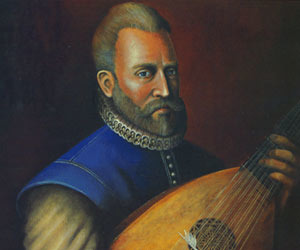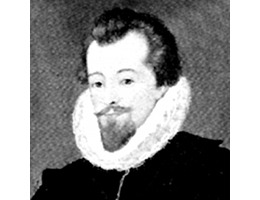
© thefamouspeople.com
John Dowland (1563 –1626) brought the art of weeping to an exquisite height in the early 17th century. This English Renaissance composer, lutenist, and singer became famed for his melancholy songs that have an inherent darkness that stands in contrast to much of the other music from this time.
Two works, ‘I saw my lady weep,’ and ‘Flow my tears,’ both of which were published in Dowland’s second Book of Songs, published in 1600, that capture this melancholy side of the early 17th century.
‘I Saw My Lady weep’ is a love song where it is My Lady’s beauty that transcends her state of sorrow.
I saw my lady weep,
And Sorrow proud to be advanced so,
In those fair eyes where all perfections keep.
Her face was full of woe,
But such a woe (believe me) as wins more hearts,
Than Mirth can do with her enticing parts.
John Dowland: I Saw My Lady Weep (Rogers Covey-Crump, tenor; Jakob Lindberg, lute)
As part of the new style of ‘Elizabethan melancholy,’ Dowland’s music permits a greater emotion in music than had hitherto been seen: grief, melancholy, despair all had a place in this music. It would be easy to focus a musical setting on the last lines of the first verse and concentrate on winning hearts, but Dowland weeps and shows a face of woe to communicate the feeling of the song. At the end, in the third verse (03:53),
O fairer than aught else
The world can show, leave off in time to grieve.
Enough, enough, your joyful looks excels.
Tears kill the heart, believe;
O strive not to be excellent in woe,
Which only breeds your beauty’s overthrow.
Dowland uses the repetition of ‘Enough’ in the third line to bring things to a climax and the poem closes by reminding the weeping woman that all these tears cannot be good for her beauty.
What is considered a paired song with ‘I Saw My Lady Weep’ is the very influential ‘Flow, My Tears.’ If the first song is the lover looking as his despairing love, then the second song is the lover looking at his own life.
John Dowland: Flow my tears (Rogers Covey-Crump, tenor; Jakob Lindberg, lute)
Flow, my tears, fall from your springs!
Exiled for ever, let me mourn;
Where night’s black bird her sad infamy sings,
There let me live forlorn.
By the time we get to the last verse (02:22), the lover declares that even those in Hell are better off than he.
Hark! you shadows that in darkness dwell,
Learn to contemn light
Happy, happy they that in hell
Feel not the world’s despite.
It’s interesting to listen to different singers take on this song. Roger Covey-Crump’s version seems to be so dark as to be set in a dungeon – he’s sitting in the corner in the dark, despairing of anything in the future.
The countertenor Alfred Deller made an early and influential recording of the piece but doesn’t capture the utter darkness of the Covey-Crumb interpretation. He does put some interesting improvisational turns on some of the melodic lines that add to the weeping aspect.
John Dowland: Flow my tears (Alfred Deller, counter-tenor; Desmond Dupré, lute)
The pop singer Sting took on this song in his album Songs from the Labyrinth (2000) and, unfortunately, his pop style cannot stand up to the long vocal lines required by Dowland’s theme and tempo. The air in his voice doesn’t help either.
John Dowland: “Flow my tears” (Edin Karamazov) (starting at 00:49)
Dowland made his name on these crying songs and ‘Flow My Tears’ became his ‘signature song.’ The piece first existed as a piece for lute simply entitled Lachrimae (Tears). Despite its sad nature, this song is considered by one scholar as ‘probably the most widely known English song of the early 17th century.
For more of the best in classical music, sign up to our E-Newsletter




